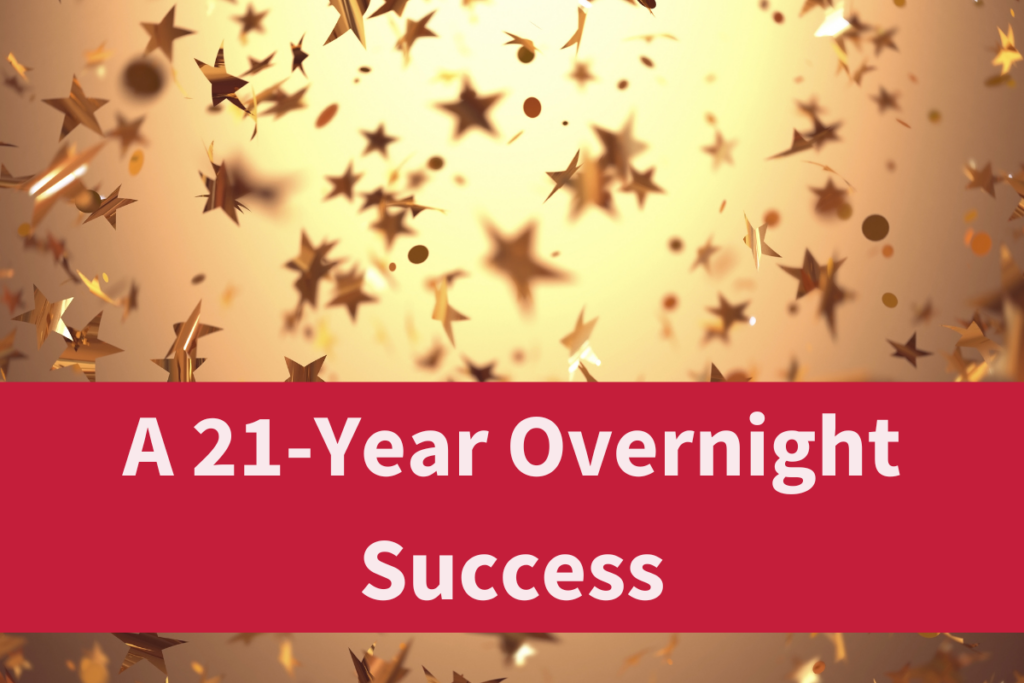This story first appeared in my newsletter, The Executive’s Guide to the Content Galaxy.
How long does “evergreen content” last? Evergreen trees can live for over 1,000 years. And while your “complete guide to media training” may not make it to a millennium, you expect it to make an impact for a while.
The latest meme overtaking Twitter (sorry, X) has me thinking about evergreen content. In 2003, when the original Star Wars trilogy was broadcast in Chile, they didn’t bother with typical ad breaks. Instead, beer brand Cerveza Cristal had its bottles edited into the movie. More than a product placement, the beers looked like they were part of the plot (though the singer belting out “CERVEZA CRISTAL!” likely alerted most viewers to the contrary).
At the time, the campaign drew praise and ire: It won an advertising award at Cannes and caught George Lucas’ litigious eye. But hey, what’s done is done, and the Cerveza Cristal episode was relegated to the advertising history books.
Until March 2024, when this tweet (or, uh, X?) hit the scene:
Lo and behold, 21 years later, a meme was reborn. Users quickly added Cerveza Cristal to Star Wars, Lord of the Rings, Dune — any movie that might benefit from a cold one. And, as is the way of the internet, brands weren’t far behind.
Hilarity ensued, and I cannot evict that jingle from my brain.
With evergreen content, memorable beats optimized
Now, when some post-production editor at a Chilean broadcaster got this goofy assignment, were they planning for it to become an internet sensation a generation later?
Unlikely.
Yet, this funny little quirk of television history should remind us of one truth about content: Make it memorable.
We content producers constantly fret over optimizing our blog posts and videos for length and clarity, shoving every valuable keyword into an article, or assessing the absolute best time to send that email newsletter.
Yes, those pieces play their parts. But at the heart of any successful piece of evergreen content is memorability.
In the case of Cerveza Cristal, the video was hilarious and nostalgic—and thus memorable—for many Twitter users. That encouraged sharing and copycatting, which fed into a quickening virality cycle.
How long will it last? If the virality cycle on this meme were a hurricane, we’re approaching the shoreline. It’ll lose steam in the coming days and become yet another random GIF people drop into DMs.
But consider the perspective of Cerveza Cristal’s marketing team right now. This effort was entirely user-led (isn’t that the dream?), and they benefited. Their brand impressions are probably going bonkers. Will that turn into sales? Let’s see how the quarter plays out, but a nice sales bump would be reasonable.
So I should splice my product into famous movies, right?
That would be the wrong lesson to take away from this episode. The fact the original cut was done in the pre-widespread-internet days added to the charm.
Copying it now feels inauthentic (and memorable for the wrong reasons).
Instead, use it as a lens to review your evergreen content. What do you want people to remember? Are you presenting it in a way that makes it memorable?
- Does your 2,500-word “optimized” blog post bury the best stuff deep below the fold?
- Is your video 15 minutes’ worth of talking heads before you say something insightful?
- Is your podcast a fun, fresh conversation or a recitation of approved branding language?
Not every piece of content can (or should) be funny, like the Cerveza Cristal cut. But we should understand what reactions we want to cultivate in people who interact with us. Then, we should present them with content that elicits those reactions—that makes our points memorable.
It probably won’t win you any awards at Cannes (though you can avoid a Lucasfilm lawsuit). Yet, that’s the secret to evergreen content that lasts. And who knows? Maybe your guide to media training will become the hottest meme in 2045.

